A brief history of Ethiojazz for the musically curious
The story of how the grooves of ’60s Addis Ababa slowly captivated the world
Ethiopia’s music is a deep ocean, full of as many different types of folk, religious, classical and pop music as you can think of, representing more than 80 culture groups. There’s so much beautiful, intriguing and special Ethiopian music to hear… but over the past 25 years, there’s one particular style that has become a global phenomenon: Ethiojazz.
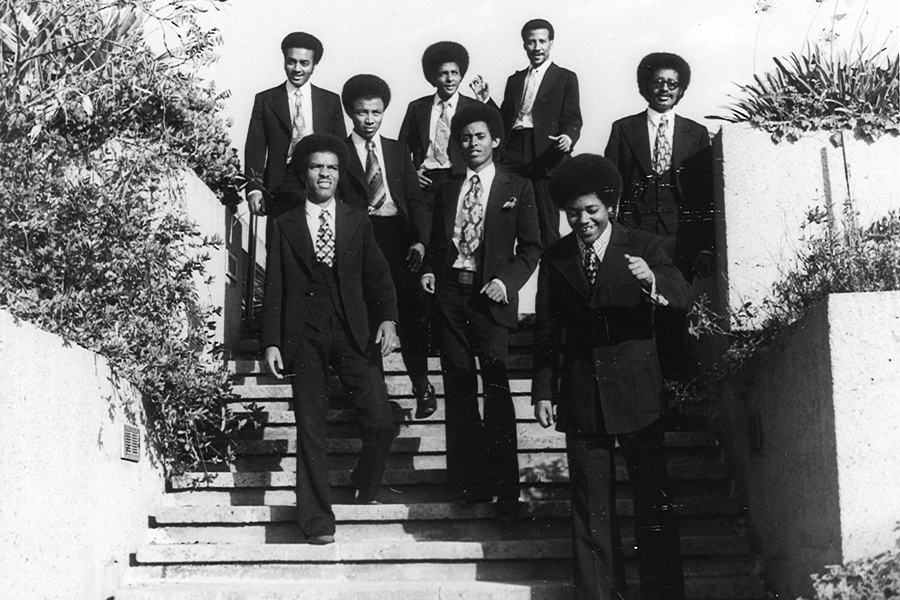
Walias Band / Image: courtesy of Hailu Mergia

In the mid-1960s, a new musical scene was bubbling up in Ethiopia’s capital, Addis Ababa. After working in state-owned institutional bands during the day, musicians would take their instruments to the nightclubs and bars and play what people really wanted to hear. This was a style that mixed soul, funk, rock ‘n’ roll, gospel and jazz with something unmistakably Ethiopian: it was all based on the qeñet, a system of five-note scales from Ethiopia’s highlands, where each scale has its own personality and emotion. With unique inflections influenced by traditional instruments, melodies using the qeñet have an indefinable Ethiopianness that makes them immediately recognisable.
And so the city grooved to this new pop, full of funky horns, solid rhythms, Amharic lyrics and a distinctive urban-folk tinge. It was fresh, exciting and – importantly – Ethiopian. This was Swinging Addis.
It was the singers who were the celebrities: Tilahun Gessesse, Mahmoud Ahmed, Alemayehu Eshete and Ayalèw Mesfin all had the moves, the looks, the fashion and the voice to make them the biggest stars. And even on the overwhelmingly male-dominated nightclub stages, female singers such as Bizunesh Bekele and Hirut Bekele were beloved for their beguiling voices and swinging songs. Behind them, the musicians that created their sound gained a reputation, too. Groups such as Walias Band became legendary for their impeccable and forward-facing arrangements, while accompanying all the great singers on the scene; other musicians stood out for their visionary skills as soloists, such as saxophonists Tèsfa-Maryam Kidané and Getatchew Mekurya, who used their instruments to make music unlike anyone else.
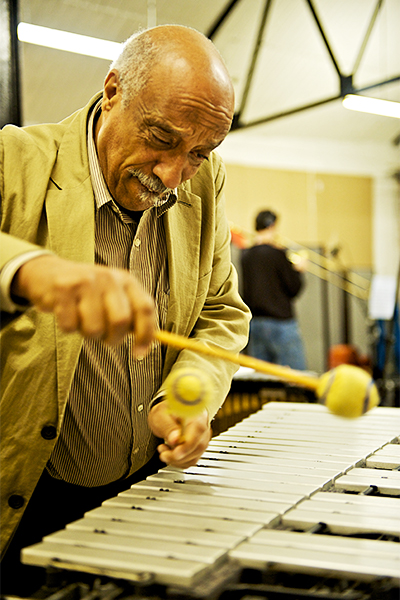
Mulatu Astatke at a Heliocentrics session, 2008 / Image: Alexis Maryon
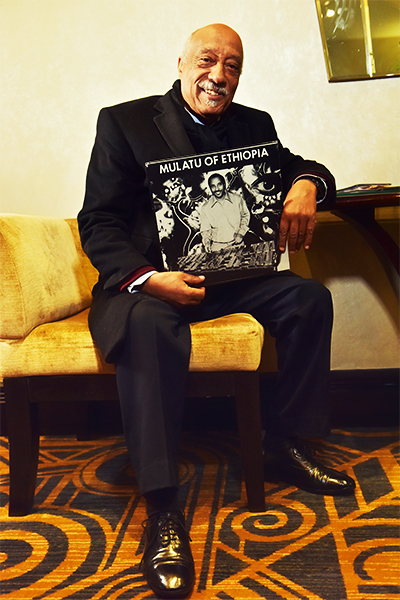
The Mulatu of Ethiopia LP held by the man himself, London, 2017 / Image: Alexis Maryon
While this fertile musical scene was starting to blossom, another musician was creating his own revolution in Ethiopian music far away. Although nowadays it’s common to refer to all the music of Swinging Addis as Ethiojazz, that’s a modern designation. In its first and narrowest definition, Ethiojazz is the work and legacy of one man: Mulatu Astatke.
Mulatu was studying music in London. Although he was learning Western classical clarinet and piano at Trinity College, his true education came – where else? – in the clubs. There, he played vibraphone and percussion with big bands in the evening and jammed with Ghanaian, South African and Caribbean musicians after hours. After London, music took him to the US, where he studied jazz at the famous Berklee School of Music and, again, got jamming, sharing ideas with musicians from Puerto Rico, Cuba and all over the US.
There was no-one else making music like Mulatu – not in Addis, not in Ethiopia, not in the world
These international musical encounters coalesced into Mulatu’s own individual brand of performance and composition, a style where hard-bop, post-bop and third stream jazz united with Cuban piano, Afro-Latin rhythms and Nuyorican salsa horns, all under the beguiling, inescapable tonality of the Ethiopian qeñet. This is Ethiojazz. When Mulatu returned to Ethiopia at the height of Swinging Addis, he found himself right at home and quickly made a name for himself. There was no-one else making music like Mulatu – not in Addis, not in Ethiopia, not in the world.
Sadly, Swinging Addis wasn’t destined to last. When the Stalinist Derg regime took over the country in 1974, every facet of the music industry became strictly controlled. The radical musical experimentation and nightclub buzz all but petered out. Some stars left the country, some retired. Some stayed and continued performing, but opportunities for public shows were slim. The scene was gone.
But not forgotten.
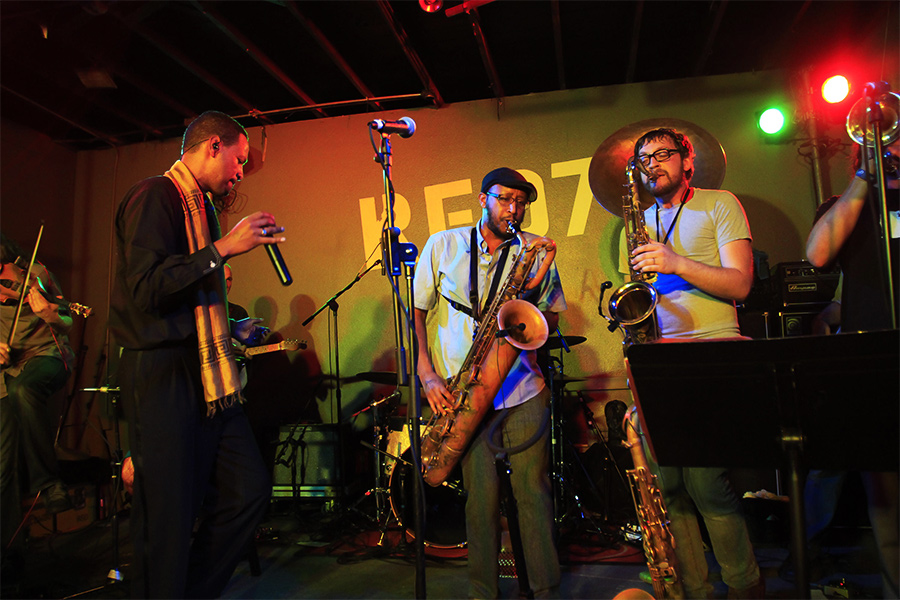
Debo Band onstage at Red 7 during SXSW 2012 in New York / Image: Alamy

In the mid-’80s, French record producer Francis Falceto heard a record by Mahmoud Ahmed and fell in love. An adventure ensued. Falceto journeyed to and from Ethiopia, met the old superstars and collected as many records as he could carry. The culmination was Éthiopiques, a series of compilations of the most exciting music from the Swinging Addis period, compiled by Falceto, starting in 1997. Audiences in Europe and America were fascinated by these wonders – vintage recordings with a timeless youth, ultra-cool grooves that were familiar yet so utterly new to them. As more Éthiopiques albums came out, the fanbase only grew, until Ethiojazz in all its forms was one of the hippest styles around.
Bands started to spring up all over – some performing the classic Ethiojazz hits, others taking it in whole new directions. In the US there’s Debo Band, Budos Band and the Either/Orchestra, France has Badume’s Band, Akalé Wubé and Arat Kilo, the UK has the Heliocentrics, Belgium has Black Flower… and that’s the tip of the iceberg.
Those groups have accompanied a renaissance for the original masters, too. Swinging Addis legends such as Mulatu Astatke, Mahmoud Ahmed and Getatchew Mekurya have become global stars with worldwide tours, boundary-pushing collaborations and scores of adoring fans, and their music has appeared in some perhaps unexpected places. Mulatu’s compositions were used as the basis of the soundtrack to the Jim Jarmusch film Broken Flowers, and Ethiojazz records have been sampled throughout hip-hop, notably on As We Enter by Nas and Damian Marley (using Mulatu’s ‘Yègellé Tezeta’).
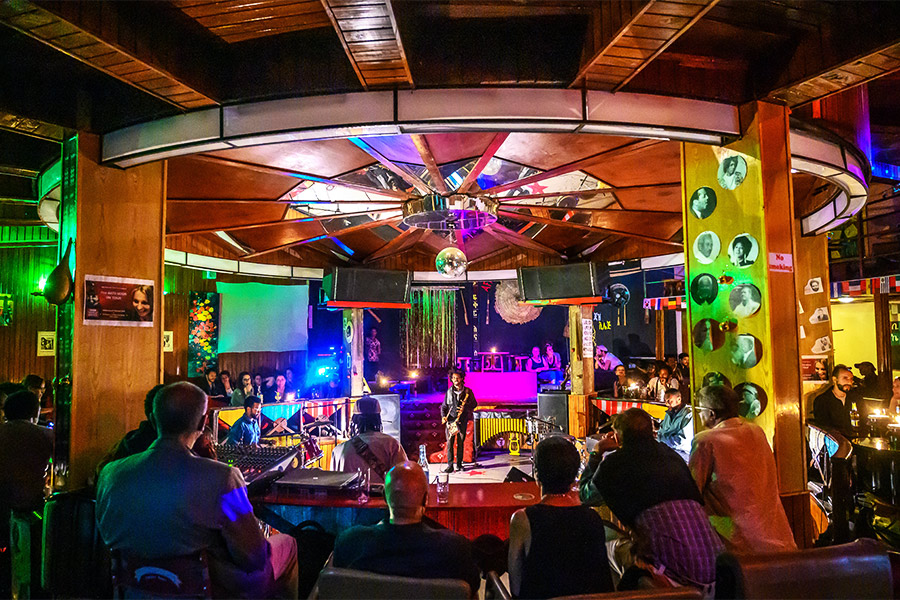
African Jazz Village in Addis Ababa / Image: Alamy

In today’s Ethiopia, jazz has had its heyday, its popularity long usurped by reggae, hip-hop and R’n’B (all with their own distinctive Ethiopian twist, naturally). But that doesn’t mean jazz is dead. Dotted here-and-there in the cafes and bars of Addis – Mama’s Kitchen, the Office Bar and Mulatu Astatke’s own place, the African Jazz Village – the next generation of musicians is making Ethiojazz its own, inspired by the old classics while updating their sound with contemporary international jazz and traditional Ethiopian influences. Guitarist Girum Mezmur, bassist Henock Temesgen, pianist Samuel Yirga and more – they’re all leading groups and reinvigorating Ethiojazz in Ethiopia and around the world. Girum and Henock are also co-founders of the Jazzamba School of Music in Addis Ababa, imbibing young talent with the skills and passion to keep the jazz flame burning on into the future.
Ethiojazz is a lot of different things. It is the funk and soul of 1960s Addis Ababa, the incomparable Ethio-Latin groove of Mulatu Astatke, the international revitalisations of the 21st century and the exciting new sounds from Ethiopia in the present and the future. All of it is remarkable, utterly unmistakable and always groovy. There’s a lot to dive into, but wherever you start, you’re guaranteed a unique perspective on Ethiopian culture, and a headful of brilliant tunes.